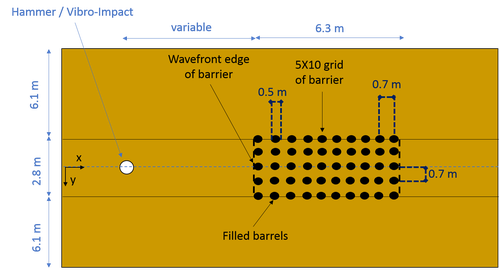According to the analytical and numerical analysis, the presence of non-resonating mass (dead-mass) over the soil surface, modify the attenuation performance of the seismic surface waves. During the first phase of the experimental tests, plastic barrels filled with the sand ( approximately 100 kg of mass) are employed and placed over the pristine soil. A non-resonating barrier is realized by a regular grid of 5X10 plastic barrels (2.8 m X 6.3 m) with the spacing of approximately 20 cm. multichannel analysis of surface waves (MASW) is performed across this grid.
